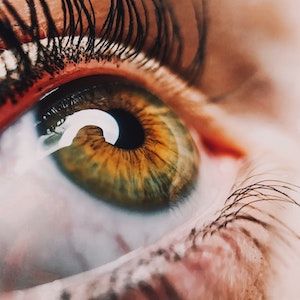News
Article
Alcohol Consumption Increases Risk of Visual Impairment in Patients with Open-Angle Glaucoma
Author(s):
Volume and frequency of alcohol consumption were associated with a greater risk of visual impairment and blindness among patients with newly diagnosed OAG.
Credit: Unsplash/Perchek Industries

Alcohol abstinence may be a lifestyle change worth considering for patients with newly diagnosed open-angle glaucoma (OAG), according to findings from a retrospective cohort study of Korean patients.
Quitting alcohol was associated with a 37% lower risk of severe visual impairment or blindness compared with continued consumption, with investigators further linking heavier and more frequent drinking to increased risk.1
“There has been no confirmatory evidence of an association between alcohol abstinence after OAG diagnosis and better outcomes relative to those for sustained drinkers,” wrote investigators.1 “Given that alcohol consumption–based randomized clinical trials are not ethically appropriate, well-designed epidemiologic studies remain the most effective way to investigate the importance of alcohol abstinence.”
The second leading cause of blindness, glaucoma affects 70 million people worldwide, 74% of whom suffer specifically from OAG. Many forms of glaucoma have no symptoms until vision loss has already progressed. Thus, awareness of risk factors is important for prevention and treatment. Modifiable lifestyle factors including smoking, obesity, alcohol, anxiety, and stress have been cited as risk factors for OAG, although the exact impact of modifying them is unknown.2
Yoon Jeong, MD, of the department of ophthalmology at Seoul National University Hospital in Korea, and colleagues sought to assess the association between reduced alcohol consumption or abstinence and the clinical outcomes of patients with OAG using information from the Korean National Health Insurance Service’s claims and health examination database. The study enrolled patients who were diagnosed with OAG between January 1, 2010, and December 31, 2011, and had been alcohol drinkers before their OAG diagnosis. These patients were stratified into 2 cohorts based on postdiagnosis alcohol consumption status.1
To be included in the study, patients were required to have been assigned an OAG diagnosis code and prescribed 1 or more antiglaucoma medications for more than 3 months or had undergone glaucoma surgery. Investigators selected patients who had undergone a baseline examination within the 2-year period before the OAG diagnosis date and a second examination within the 2-year period after diagnosis.1
Patients who had been diagnosed with OAG within the 2 years preceding the study, were missing health examination data, had been diagnosed with exudative age-related macular degeneration or diabetic retinopathy, and were already severely visually impaired or blind before the second health examination date were excluded from the study.1
Alcohol consumption status and its changes were evaluated based on a self-reported questionnaire. Patients who were drinkers at the time of the first health examination were categorized into 1 of 2 groups based on their status at the second health examination: sustained drinkers or abstainers from alcohol after OAG diagnosis.1
In total, investigators enrolled 13,643 patients with newly diagnosed OAG who consumed alcohol before their diagnosis. Participants had a mean age of 53.7 (Standard deviation, 11.9) years and were 88.4% male. The cohort was followed for incident severe visual impairment or blindness up until December 2020.1
In the total study population, 2866 (21.0%) patients abstained from alcohol after OAG diagnosis while 10,777 (79.0%) sustained drinking. Among the sustained drinkers, 7458 (69.2%) were mild drinkers, defined as <105 grams per week, and 3319 (30.8%) were moderate to heavy drinkers, defined as ≥105 grams per week. Investigators pointed out compared to the abstainer group, sustainers tended to be younger, male, and had a lower prevalence of most comorbidities.1
During 91,366 person-years of follow-up, 58 patients with OAG were diagnosed with incident severe visual impairment or blindness. Among this group, 45 were alcohol sustainers and the remaining 13 were abstainers. Upon analysis, patients abstaining from alcohol after diagnosis had a lower risk of severe visual impairment or blindness compared to patients who sustained drinking (adjusted hazard ratio [aHR] after inverse probability of treatment weighting, 0.63; 95% confidence interval [CI], 0.45-0.87).1
Among patients who were sustained drinkers, investigators noted both mild consumption (aHR, 1.52; 95% CI, 1.01-2.28) and moderate to heavy consumption (aHR, 1.78; 95% CI, 1.11-2.86) after OAG diagnosis were associated with a greater risk of severe visual impairment or blindness relative to abstainers. Frequent drinking, which was defined as 4 or more days per week, also was associated with a higher risk (aHR, 2.56; 95% CI, 1.52-4.33) compared with abstinence. More frequent weekly drinking after OAG diagnosis was a significant risk factor for incident severe visual impairment or blindness (P < .001), while regular to frequent consumption presented a significantly higher risk compared with abstinence (aHR, 2.56; 95% CI, 1.52-4.33).1
“In this cohort study of patients with OAG who were drinkers, alcohol abstinence was associated with diminished risk of severe visual impairment or blindness. Lifestyle interventions, such as alcohol abstinence, could be essential in a comprehensive approach for patients with newly diagnosed OAG,” concluded investigators.1
References:
- Jeong Y, Kim SH, Kang G, et al. Visual Impairment Risk After Alcohol Abstinence in Patients With Newly Diagnosed Open-Angle Glaucoma. JAMA Netw Open. 2023;6(10):e2338526. doi:10.1001/jamanetworkopen.2023.38526
- Mahabadi N, Foris L, Tripathy K. Open Angle Glaucoma. StatPearls. August 22, 2022. Accessed October 24, 2023. https://www.ncbi.nlm.nih.gov/books/NBK441887/





